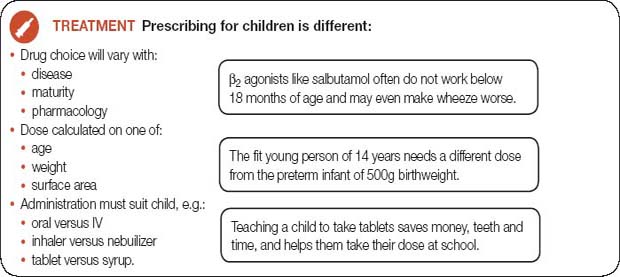 No-one should prescribe for babies or children without training.
No-one should prescribe for babies or children without training.
In children, the most difficult decision is deciding which drug to give when. This is beyond the scope of this book and is a skill learned in training in practice.
Prescriptions should be clearly written and include your name and contact details. The child’s details must include age, date of birth and current weight (kg). Complete the drug allergies and adverse reactions box. You should know if the child is on any other medication. In the newborn or breastfeeding infant, you should be aware of the drugs mother is on, or has received recently.
Generic drug names should usually be used. Make numbers clear and legible, avoiding decimal points if possible (e.g. write 500 micrograms instead of 0.5 mg). ‘g’, ‘mg’, and ‘mL’ are used but other units should be written out in full. Be clear which formulation to use, and how it is to be given (oral, IV, IM, SC, etc). Often the duration or number of doses should be recorded and this is important for antimicrobials.
Liquids, suspensions and syrup preparations vary in strength. The medication should usually be prescribed in mg, and the recommended strength noted.
Stay updated, free articles. Join our Telegram channel

Full access? Get Clinical Tree


